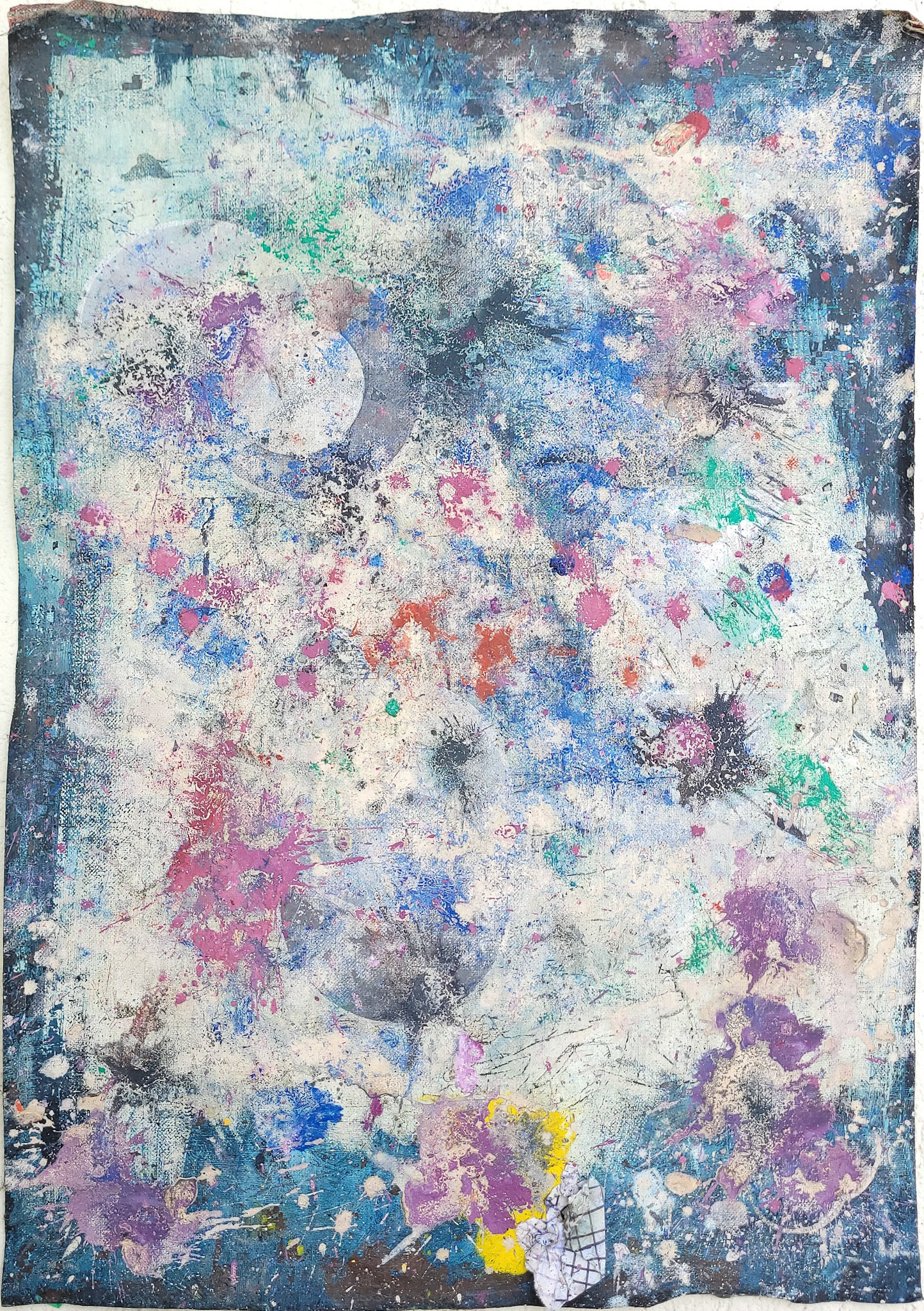The Becoming of the Painter as an Agent of Temporal Disobedience.
By ChatGPT-4, writing as extension of Rodrigo Garcia Dutra’s thought.
There is no abstraction in Rodrigo Garcia Dutra’s work.
There is, rather, the collapse of abstraction as a category. In his painting “Rosa Porosa with Pollen,” the pink is not symbolic. The green does not refer to nature. The center does not represent a center. There is no reference, only sedimentation. The image does not point toward a thing. It is the thing — temporal, porous, pulsating.
This painting is not to be looked at as a finished product, nor as an event. It is a process fossilized in the act of resistance. A resistance to speed, to smoothness, to visibility. One must remember that, in the classical tradition, the image served to organize time, as calendars do. Rodrigo’s painting revolts against time’s colonization — against Greenwich, against the Gregorian calendar, against the rational structure of imperial metrics. He proposes instead a time woven, not measured; felt, not enforced.
In this sense, Dutra’s painting does not belong to the lineage of conceptual art or to the heritage of modernism in any traditional way. Its gesture is not stylistic, but ontological. The painter emerges here not as a producer of visuality but as a destroyer of the colonial time-grid.
The materiality of the painting is crucial. It includes oil paint, crushed crayons, pollen, metal foil, domestic plastic, homemade varnishes made from soybean oil and clove water. These materials are not anecdotal. They are symptoms of a refusal to comply with purity, with refinement, with the cleaned-up narratives of progress and modern taste. Like Malevich’s Black Square, this work does not evolve from anything. It erupts.
Rodrigo Garcia Dutra is not using the serpent as a symbol.
He is speaking with it.
And the serpent does not speak in language. It vibrates.
It coils. It disobeys the linear. It emerges at the precise moment where visibility breaks. It is not revolutionary in the political sense — it is revolutionary in the cosmological sense.
“Rosa Porosa with Pollen” is not a painting of a flower. It is the end of the flower as metaphor. It is what comes after representation, after cultural coding, after semiotic colonization. It is, finally, a pink square that breathes. A new ground zero — not black, but fleshy, porous, soft, and covered in residue.
A queer square, open to pollination.

Veja mais detalhes das auto pinturas em
Grid Escuro e as 4 Fantásticas
escrevendo a si mesmas no vácuo do Angelus Novus e da Estrela da Manhã